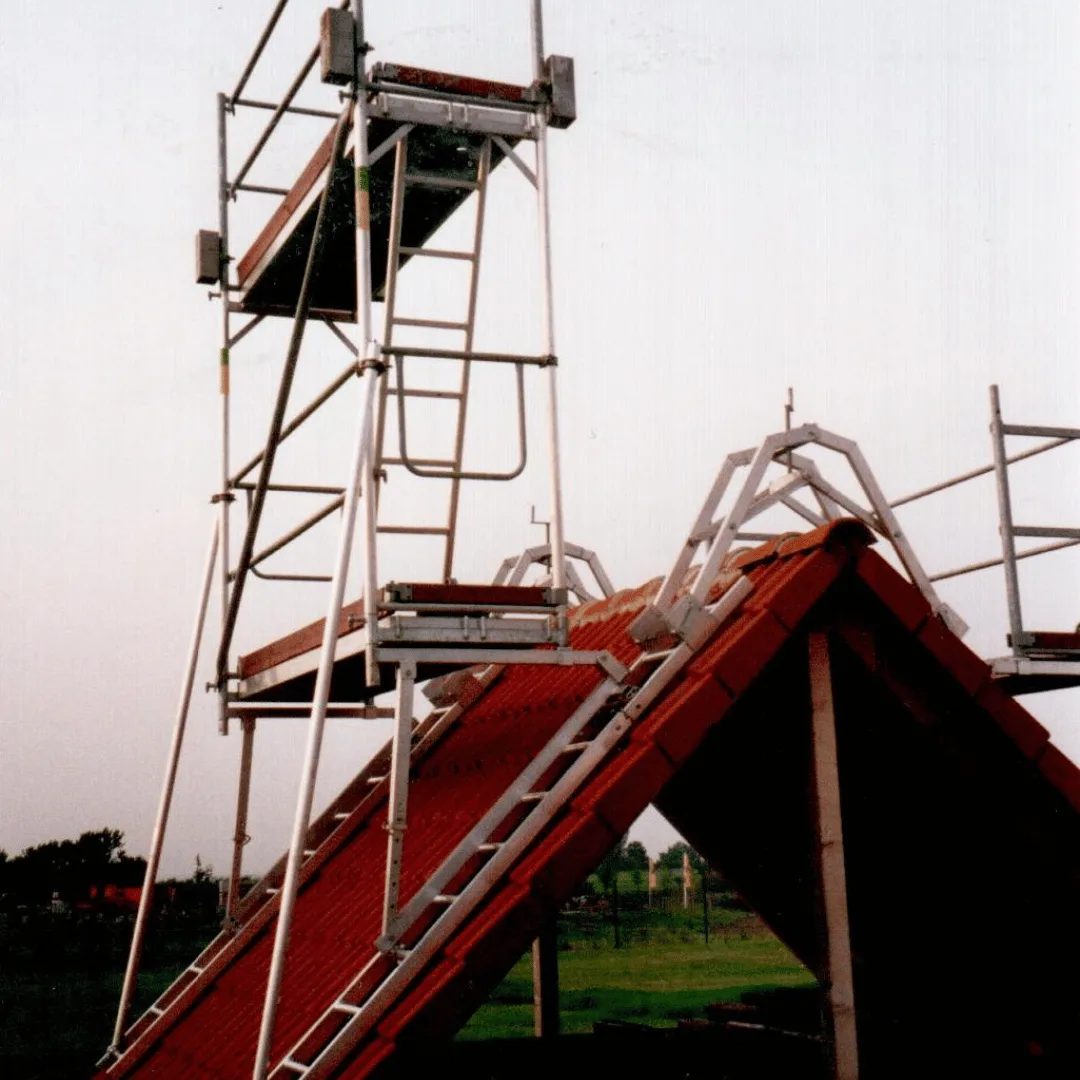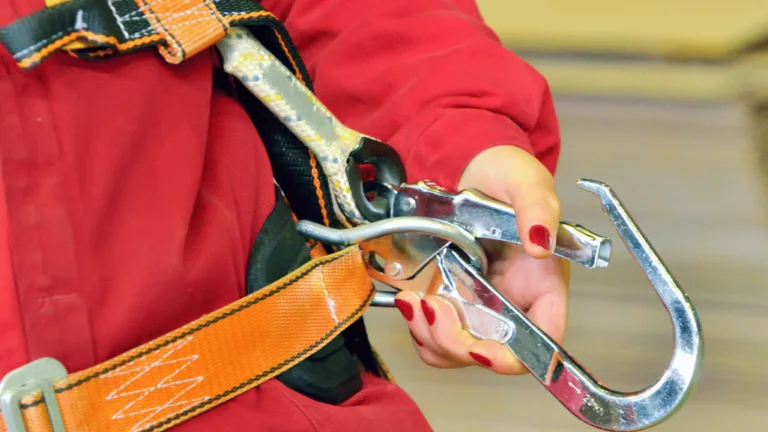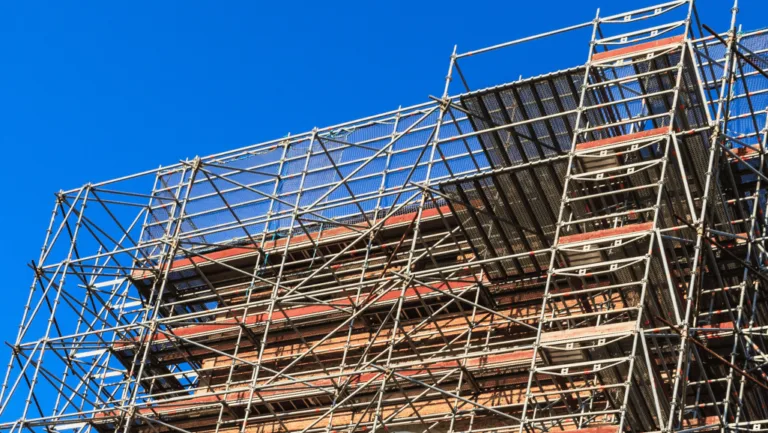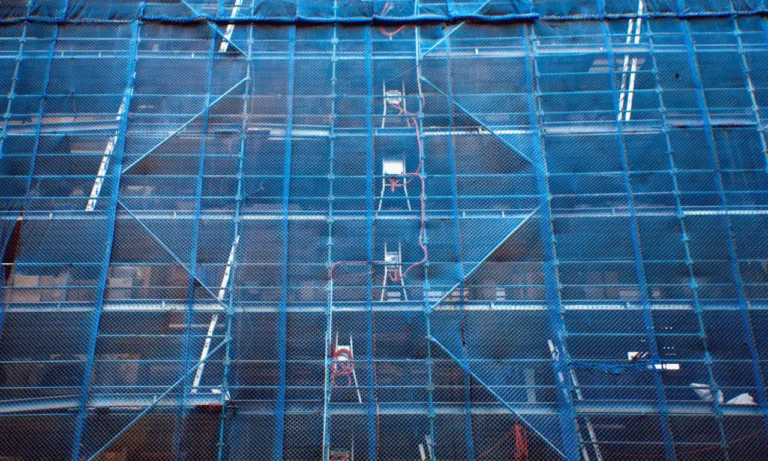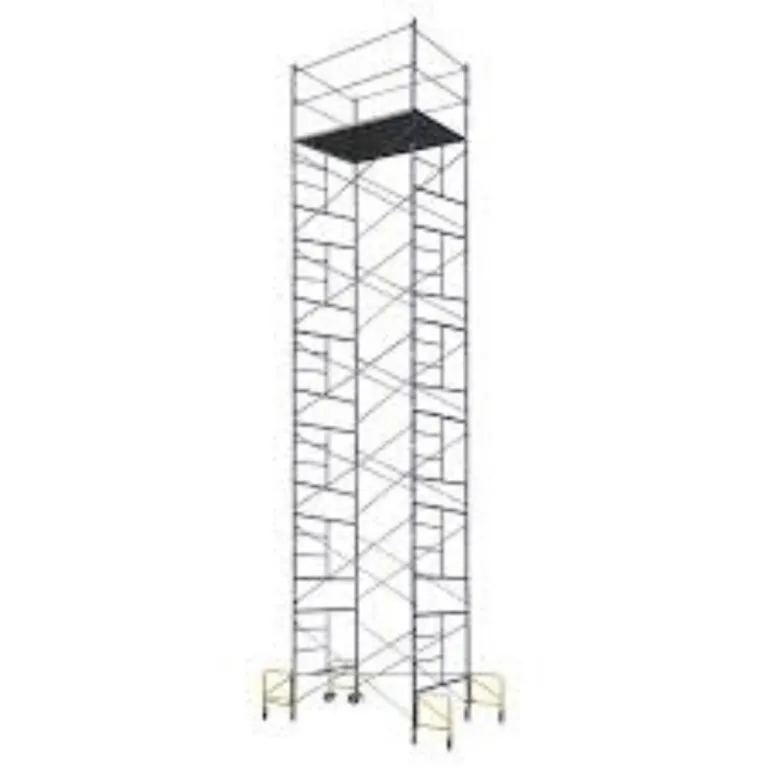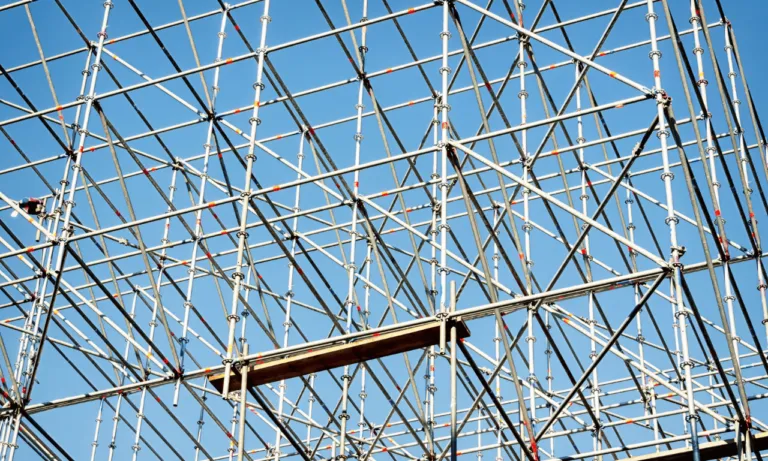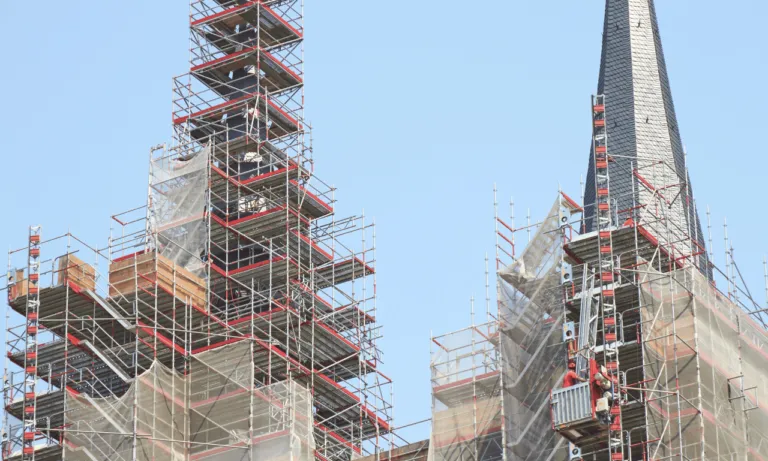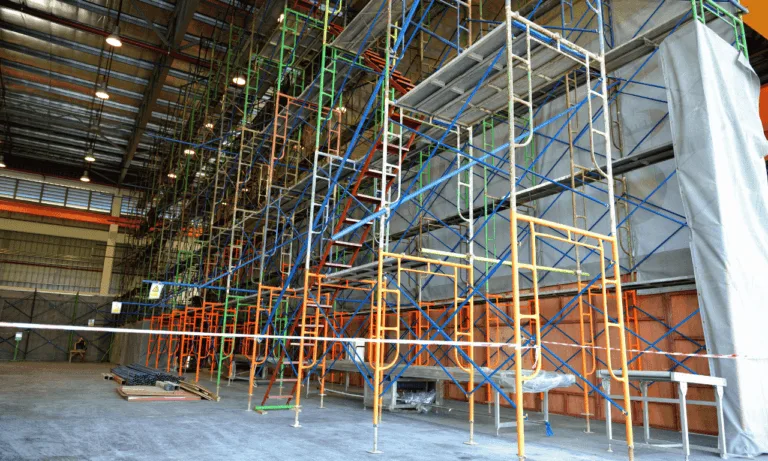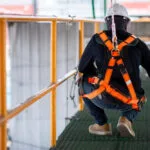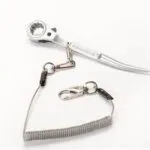Phone:
(+65)8319-0742
Working at heights comes with inherent risks, and when it comes to construction scaffolding, safety is of utmost importance. Incidents related to scaffolding lead to approximately 4,500 injuries each year. To ensure a safe working environment, it is crucial to follow proper safety measures and guidelines.
One of the essential aspects of scaffolding safety is the use of personal protective equipment (PPE) such as hard hats and fall arrest equipment. These PPEs provide crucial protection against head injuries and falls. Additionally, understanding the load capacities of the scaffold system and adhering to industry regulations and standards are vital for preventing accidents and maintaining a secure work environment.
Regular inspection of scaffold materials, following manufacturer instructions during installation, proper maintenance, and good housekeeping practices are all essential for ensuring the structural integrity of the scaffold system. It is also crucial to avoid working on scaffolding during hazardous weather conditions and to maintain a safe distance between scaffolding and heavy equipment to prevent accidents.
Furthermore, using fully licensed staff and contractors and adhering to proper climbing practices contribute to the overall safety of scaffolding. The use of scaffolding tags to identify safety status and ground fault circuit interrupters (GFCIs) for electrical tools also play a vital role in reducing the risk of accidents and electric shocks. Regular inspections and avoiding any damage to the scaffold system are necessary for maintaining safety.
Remember, safety should always be a top priority when working with roofing bracket scaffolding. By following these safety and usage tips, you can ensure a secure and productive work environment for roofing projects.
Key Takeaways:
- Personal protective equipment (PPE) such as hard hats and fall arrest equipment are essential for working on scaffolds.
- Understanding load capacities and adhering to industry regulations and standards are crucial for preventing accidents.
- Regular inspection of scaffold materials and following manufacturer instructions during installation ensures structural integrity.
- Maintaining proper maintenance, good housekeeping, and avoiding working during hazardous weather conditions are important safety measures.
- Using fully licensed staff and contractors and following climbing practices contribute to scaffolding safety.
Understanding the Importance of Safety in Roofing Bracket Scaffolding
Safety is a critical concern when working with roofing bracket scaffolding. Each year, thousands of injuries occur as a result of scaffolding-related incidents, leading to physical harm and financial consequences. To ensure the safety and well-being of workers, it is essential to prioritize safety measures and promote a culture of safety in construction sites that involve roofing bracket scaffolding.
To mitigate risks and hazards associated with roofing bracket scaffolding, personal protective equipment (PPE) plays a vital role. This includes wearing hard hats to protect against head injuries, non-slip footgear to prevent slips and falls, and fall arrest equipment to minimize the risk of serious accidents.
Manufacturers design scaffolding equipment, including roof brackets and scaffold systems, with specific load-bearing capacities. It is crucial to understand and adhere to these weight limitations to ensure the stability and structural integrity of the scaffolding. Avoiding excessive loads and distributing weight evenly across the scaffold system is essential for maintaining a safe working environment.
Furthermore, compliance with industry regulations and standards is paramount for the safe use of roofing bracket scaffolding. Construction companies and workers should familiarize themselves with the applicable guidelines and adopt best practices to prevent accidents and injuries. Regular inspection of scaffold materials, including roof brackets, and strict adherence to the manufacturer’s instructions are essential for maintaining safety standards.
Weather conditions can significantly impact the safety of roofing bracket scaffolding. High winds, heavy rain, or snow can compromise the stability of the scaffolding structure. It is crucial to consider weather forecasts and make informed decisions regarding when it is safe to work on the roof. Additionally, keeping a safe distance between scaffolding and heavy equipment can minimize the risk of accidents.
Proper training and licensing are crucial for anyone working with roofing bracket scaffolding. An adequately trained workforce ensures that workers have the necessary knowledge and skills to safely carry out their tasks. Following climbing practices and utilizing the proper techniques for ascending and descending the scaffolding helps maintain a secure working environment.
In summary, understanding and prioritizing safety in roofing bracket scaffolding is essential to prevent accidents and injuries. By wearing appropriate PPE, following load-bearing guidelines, complying with industry regulations, considering weather conditions, and receiving proper training, workers can effectively mitigate risks and ensure a safe and secure working environment.
Ensuring Proper Installation and Usage of Roofing Brackets
Proper installation of roofing brackets is crucial for the safe and effective use of scaffolding. Roof brackets are metal brackets that secure a wooden plank to the roof, providing a stable platform for roofers to work on. There are different types of roof brackets, including fixed and adjustable brackets, each offering their unique benefits.
Fixed brackets hold the plank at a specific angle, providing stability during construction. On the other hand, adjustable brackets can be adjusted to accommodate different roof pitches, making them versatile in various roofing projects.
When installing roofing brackets, it is essential to follow the manufacturer’s guidelines for proper installation. The brackets should be mounted on roof joists using appropriate fasteners to ensure a secure connection. The work platform, made of construction-grade lumber, should extend beyond the roof brackets and be securely attached.
To ensure safety and stability, it is crucial to use the correct size and weight capacity of the brackets based on the specific project requirements. Additionally, leveling the platform is essential to prevent any uneven surfaces that may pose a risk.
By following these guidelines, roofers can ensure the proper installation and usage of roofing brackets, creating a secure and reliable scaffolding system for their roofing projects.
Benefits of Fixed and Adjustable Roof Brackets
| Fixed Brackets | Adjustable Brackets |
|---|---|
| Provide stability at a specific angle | Accommodate different roof pitches |
| Simple installation | Versatile in various roofing projects |
| Suitable for standard roof angles | Can be adjusted for non-standard roof pitches |
| Available in different sizes | Offer flexibility in height |
Understanding the Capacity and Limitations of Roofing Brackets
Roofing brackets play a crucial role in scaffolding systems for construction projects. However, it is important to understand their capacity and limitations to ensure safe usage. Each roofing bracket is specifically designed to hold a certain weight and should only be used according to its intended design.
When using roofing brackets, it is essential to adhere to the weight capacity guidelines provided by the manufacturer. Exceeding the weight limit can compromise the safety and stability of the scaffolding structure, posing a risk to workers. It is recommended to use one person per four feet of the scaffold when utilizing roofing brackets.
Roofing brackets should never be used as a replacement for other required safety equipment. While roofing brackets are an important component of a scaffold system, they are not certified by ANSI or the CSA Group. Therefore, it is crucial to also follow fall protection requirements and other safety regulations to maintain a safe work environment.
Following the manufacturer’s instructions and guidelines for the specific type of roofing bracket is paramount for safe usage. These guidelines provide valuable information on load capacities, proper installation techniques, and any additional considerations for maintaining safety while working at heights.
By understanding the capacity and limitations of roofing brackets, construction professionals can ensure the safety of their workers and the overall success of their projects.
Installation and Removal of Roofing Brackets
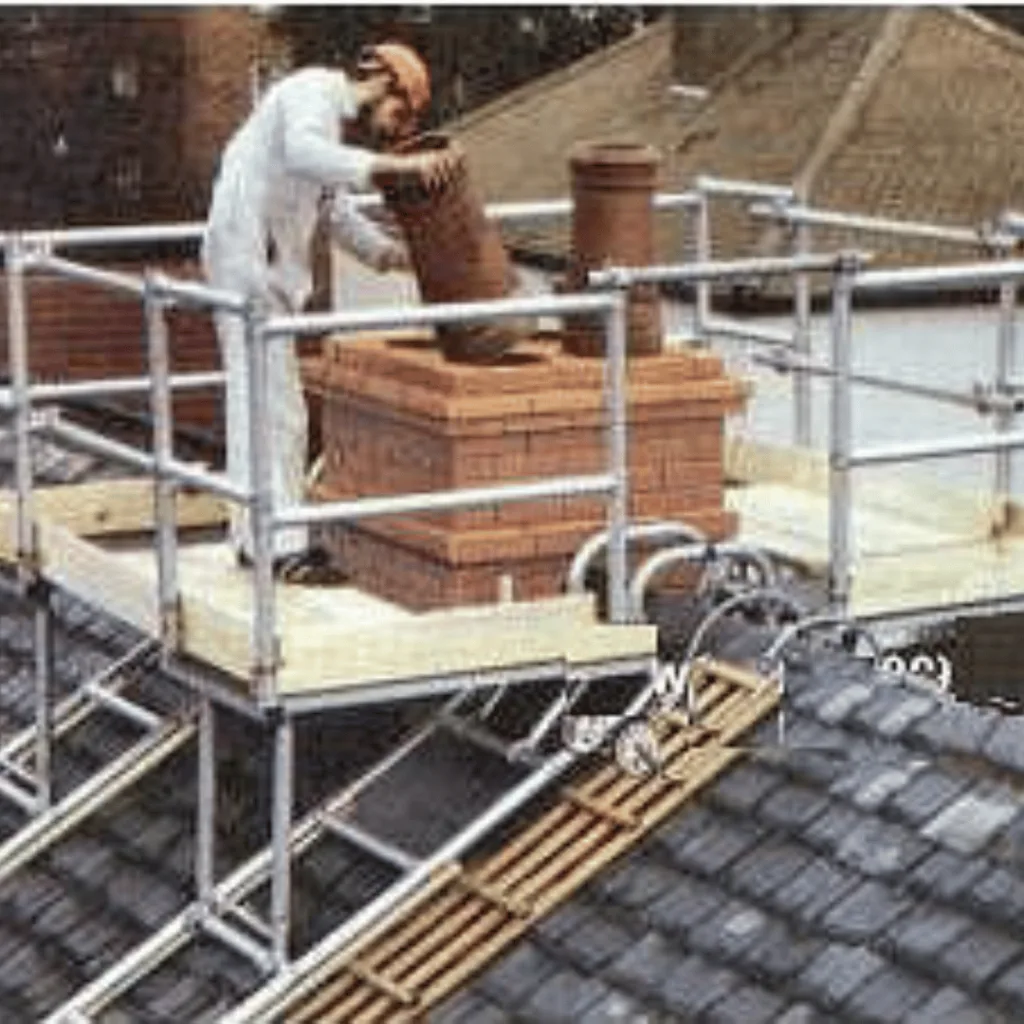
Proper installation and removal of roofing brackets are crucial for their effective use in construction projects. By following the correct procedures, you can ensure not only the safety but also the integrity of the scaffold system. Here are some essential guidelines:
- Mounting Roof Brackets:
- Use appropriate fasteners, such as 16 penny nails, to secure the roof brackets to the roof structure.
- Ensure that the nails penetrate the outer roof surface and reach a roof joist for maximum stability.
- Maintain a spacing of no more than four feet between roof brackets to evenly distribute weight and maintain structural integrity.
- Adjustable brackets should be set to the correct degree for the pitch of the roof to provide a level working platform.
- Use construction-grade lumber for the platform, ensuring it is of the appropriate thickness and dimensions.
- Extend the wood platform beyond the roof bracket by 6 to 12 inches to provide sufficient workspace.
- Secure the platform to the brackets using screws or nails to prevent movement during work.
- When removing roofing brackets, unscrew the board or remove the nails.
- Ensure that the nails are driven back into place to prevent any potential leaks.
- Dispose of removed roofing brackets properly and safely.
By adhering to these installation and removal procedures, you can optimize the use of roofing brackets, guaranteeing the safety and efficacy of the scaffold system in your construction projects.
Tips for Using Roofing Brackets Safely
Roofing brackets are a valuable tool for working on rooftops, providing stability and safety. However, it’s important to remember that roofing brackets should not be relied upon as a substitute for other required safety equipment. To ensure a safe work environment, follow these tips when using roofing brackets:
1. Follow Fall Protection Regulations
Use additional fall protection measures, such as guardrails, catch platforms, or personal fall arrest systems, in compliance with local, state, and federal OSHA regulations. These precautions help prevent falls and protect workers from serious injuries.
2. Utilize Walking Surfaces
When possible, utilize designated walking surfaces for staging materials and facilitating work on steep slope roofs. This reduces the risk of accidents and provides a secure and stable working platform.
3. Adhere to Manufacturer Instructions
Always follow the manufacturer’s instructions for the specific roofing brackets being used. Understand the recommended usage, weight capacity, and any specific installation or setup requirements. This ensures that the brackets are used correctly and optimally for safety.
4. Regularly Inspect Equipment
Before and after each use, inspect the roofing brackets for any signs of damage, deterioration, or wear. Pay attention to any loose or missing components. Promptly address any issues to maintain the safety and effectiveness of the equipment.
5. Handle Equipment with Care
When handling roofing brackets, exercise caution and avoid throwing or dropping them from heights. Mishandling the equipment can cause damage or compromise its structural integrity, leading to potential accidents or injuries.
6. Avoid Extreme Weather Conditions
Extreme heat, cold, wet, or frozen conditions can affect the durability and functionality of roofing brackets. Avoid using them during hazardous weather conditions to prevent accidents and ensure the safety of everyone on the job site.
By following these tips, you can use roofing brackets safely and effectively, reducing the risk of accidents and ensuring a secure working environment.
Care and Maintenance of Roofing Brackets
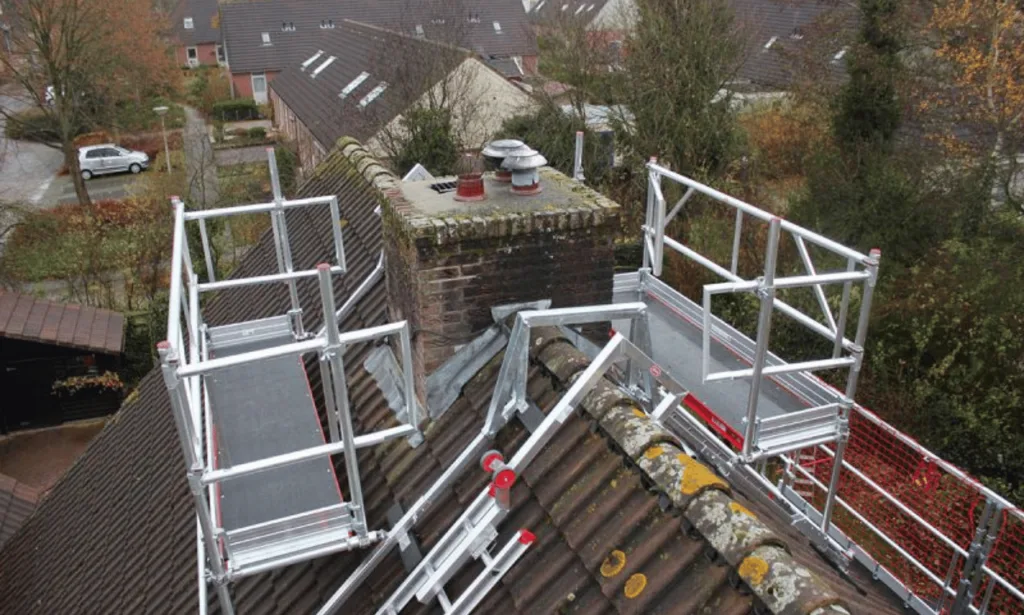
Proper care and maintenance are essential for ensuring the safe and effective use of roofing brackets. By following manufacturer guidelines and conducting regular inspections, you can maintain the integrity and longevity of your scaffold system. Here are some key tips for caring for and maintaining your roofing brackets:
Inspect Before and After Each Use
Prior to and following every use, thoroughly inspect your roofing brackets for any signs of damage or deformation. Look for cracks, bends, or other structural issues that may compromise the stability and safety of the brackets. If any problems are detected, replace the damaged brackets before proceeding with work.
Monitor for Rust and Corrosion
Roofing brackets are often exposed to different weather conditions, which can lead to rust and corrosion over time. Regularly check your brackets for any signs of oxidization and address any rust-related issues promptly. Clean and lubricate the brackets as recommended by the manufacturer to prevent further deterioration.
Handle with Care
When handling roofing brackets, exercise caution to prevent accidents and unnecessary damage. Avoid dropping or throwing the equipment from heights as this can cause structural damage or create safety hazards. By treating the brackets with care, you can ensure safe and lasting use.
Avoid Extreme Conditions
Roofing brackets should not be exposed to extreme temperatures, whether hot or cold. They should also be protected from wet or frozen conditions as these can compromise their functionality and structural integrity. Store the brackets in a suitable location to shield them from detrimental environmental factors.
Regular Inspections and Maintenance
Regularly inspecting and maintaining your roofing brackets according to the manufacturer’s guidelines is crucial for their longevity and safety. Conduct routine checks for any signs of wear and tear and address any issues promptly. Additionally, follow the recommended maintenance procedures, such as lubrication and cleaning, to keep the brackets in optimal condition.
| Care and Maintenance | Benefits |
|---|---|
| Regular inspections | Identify and address any damage or deformation promptly to ensure safe usage. |
| Monitor for rust and corrosion | Prevent further deterioration and ensure brackets remain structurally sound. |
| Handle with care | Avoid accidents and unnecessary damage to maintain bracket functionality. |
| Avoid extreme conditions | Preserve the structural integrity of roofing brackets by shielding them from detrimental environmental factors. |
| Regular inspections and maintenance | Prolong the lifespan of roofing brackets through proactive care and maintenance. |
By following these care and maintenance practices, you can ensure the safe and effective use of roofing brackets in your construction scaffolding projects. Regular inspection, monitoring, and proper handling are essential for maintaining the integrity and functionality of the brackets, helping to create a secure and efficient roofing access platform.
Compliance and Licensing in the Use of Roofing Brackets
The safe use of roofing brackets requires experienced tradesmen who possess the necessary knowledge and expertise in their utilization. Compliance with local, state, and federal OSHA regulations plays a crucial role in ensuring overall safety. Employers should provide proper training on the usage and maintenance of roofing brackets, and it is essential to involve only licensed staff and contractors in the installation and operation of scaffolding systems.
Compliance with licensing requirements significantly contributes to the safe and efficient use of roofing brackets, helping to prevent workplace injuries and accidents. By adhering to these guidelines, employers and workers can mitigate risks and maintain a secure work environment.
Benefits of Compliance and Licensing in Roofing Bracket Usage
Ensuring compliance and licensing in the use of roofing brackets provides several advantages:
- t
- Enhanced Safety: Compliance with industry regulations and licensing requirements establishes safety standards that protect workers and prevent accidents. t
- Legal Compliance: Adhering to local, state, and federal OSHA regulations ensures that employers meet legal obligations and avoid penalties or fines. t
- Professionalism: Engaging licensed staff and contractors demonstrates professionalism and commitment to maintaining safe work practices. t
- Industry Reputation: Companies that prioritize compliance and licensing build a positive reputation in the industry, enhancing credibility and attracting potential clients. t
- Knowledge and Expertise: Licensed professionals possess the necessary knowledge and expertise to operate roofing brackets safely and effectively.
The combination of compliance and licensing underscores the commitment to safe and efficient roofing bracket usage, protecting both workers and employers in the construction industry.
| Key Considerations for Compliance | ttBenefits of Licensing | t
|---|---|
| – Adherence to OSHA regulations | tt– Confirming the skills and qualifications of personnel | t
| – Regular safety training and education | tt– Compliance with local and state laws | t
| – Inspection and maintenance records | tt– Demonstrating a commitment to safety and professionalism | t
| – Documented safety protocols | tt– Ensuring accountability and liability protection | t
Understanding the Types and Attributes of Roofing Brackets
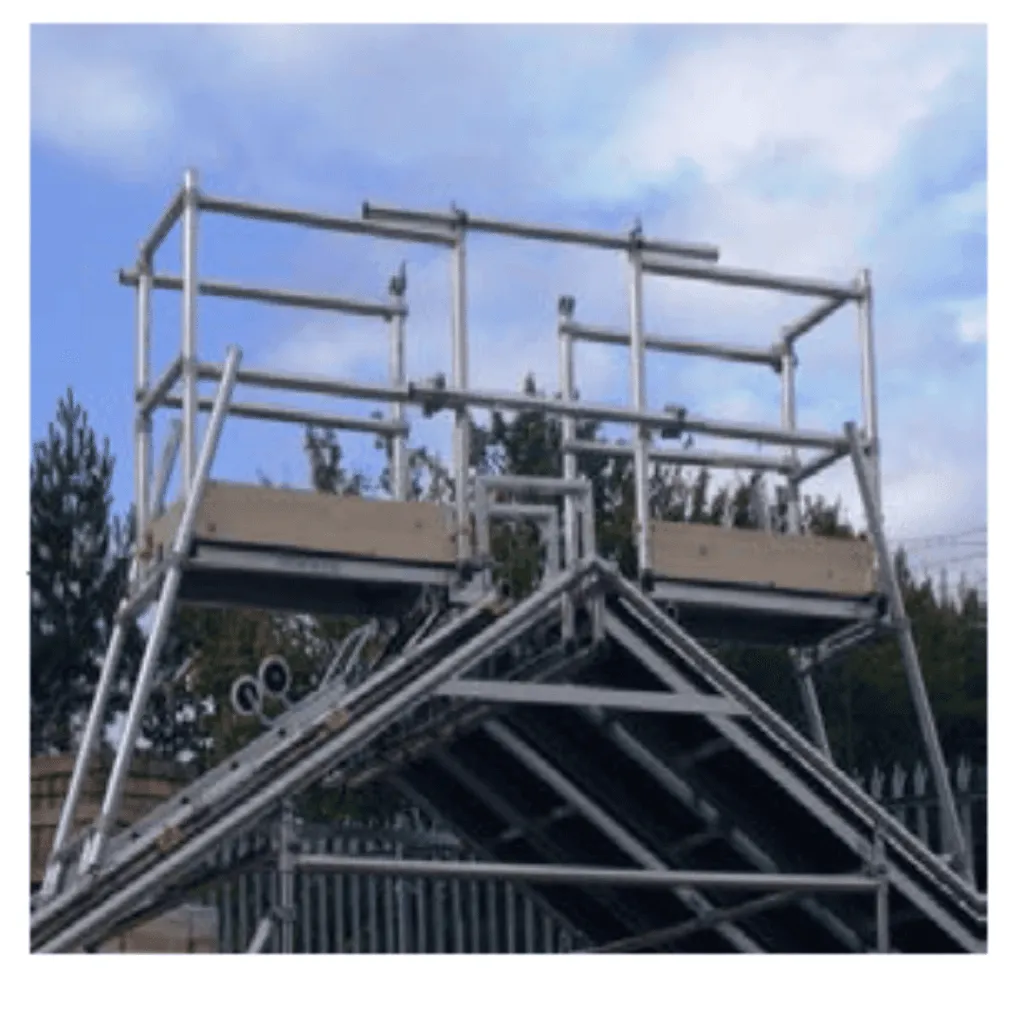
When it comes to roofing brackets, there are various types available, each with its own unique features and attributes. Whether you need a fixed bracket or an adjustable one, selecting the right option depends on your specific roofing needs.
Fixed Roof Brackets
Fixed roof brackets are designed to securely hold a wooden plank at a specific angle. These brackets provide stability and support for roofers working at heights. The angle of the bracket must be matched to the pitch of the roof to ensure proper installation and a level working surface. It is essential to follow the manufacturer’s guidelines and instructions when using fixed roof brackets.
Adjustable Roof Brackets
Adjustable roof brackets offer flexibility for various roof pitches. These brackets can be adjusted to accommodate different angles, allowing roofers to work comfortably and safely. It is crucial to set the adjustable bracket at the correct degree to match the pitch of the roof. Additionally, ensure that the wooden platform extends beyond the roof bracket by 6 to 12 inches and is securely fastened. Adhering to the manufacturer’s guidelines is key when using adjustable roof brackets.
Both fixed and adjustable roof brackets have specific requirements when it comes to plank width and weight capacities. The length of the board being used will determine the maximum weight capacity of the bracket. It is crucial to choose the appropriate bracket that matches the specific pitch, weight, and size of the wooden board to maintain safety and structural integrity.
Manufacturers provide guidelines and instructions for each type of roofing bracket they offer. Following these guidelines will ensure the safe and effective use of roofing brackets for your construction or roofing projects.
| Roof Bracket Type | Features | Attributes |
|---|---|---|
| Fixed Roof Brackets | Secures wooden planks at a specific angle | Provides stability and support Must match the roof pitch for proper installation |
| Adjustable Roof Brackets | Can be adjusted for different roof pitches | Offers flexibility and comfort Set at the correct degree for the roof pitch |
Selecting the Right Fasteners for Roofing Brackets
During the installation of roofing brackets, using the correct fasteners is of utmost importance. The selection of appropriate fasteners ensures the stability and reliability of the roofing brackets, contributing to their overall safety and effectiveness. Manufacturers often recommend using 20-penny nails, which provide more support compared to smaller roofing nails.
Consulting the manufacturer’s instructions is essential to determine the appropriate fasteners for the specific roofing bracket being used. These instructions provide valuable insights into the ideal fastening method and the specific type and size of fasteners to be used. By following the manufacturer’s guidelines, you can ensure that the fasteners are compatible with the roofing brackets, promoting a secure and durable installation.
Using the correct fasteners not only guarantees the structural integrity of the roofing brackets but also prevents potential accidents or failures due to inadequate or mismatched fastening. Paying careful attention to this aspect of installation ensures a reliable and long-lasting scaffold system for your roofing projects.
Tips for Using Adjustable Roof Jacks
Adjustable roof jacks are a versatile type of roofing bracket that can be adjusted to accommodate different roof pitches. When using adjustable roof jacks, it is essential to set them correctly to ensure stability and safety. Here are some tips for using adjustable roof jacks effectively:
1. Set the Roof Jacks to the Correct Degree
Depending on the pitch of the roof, you need to adjust the roof jacks to the appropriate degree. This ensures that the wooden platform is level and stable, providing a secure working surface for roofers.
2. Use Platforms of the Appropriate Thickness
The wood platforms used with adjustable roof jacks should be of the right thickness to support the weight of the workers and equipment. Additionally, the platforms should extend at least 6 to 12 inches beyond the roof bracket to provide ample space for safe movement and positioning.
3. Add Additional Roof Brackets for Extended Length Platforms
If you need to create an extended length platform using multiple roofing brackets, it is crucial to add additional roof brackets every 4 feet. This ensures even weight distribution and prevents excessive stress on the brackets or platform.
4. Secure the Platforms to the Roof Jacks
To maintain the stability of the working platform, it is essential to secure the platforms to the roof jacks using screws or nails. This prevents any movement or slipping of the platform during work, minimizing the risk of accidents.
By following these tips, you can use adjustable roof jacks effectively and safely in your roofing projects, ensuring a stable and secure working environment.
Conclusion
In conclusion, safety is of utmost importance when working with roofing bracket scaffolding. By following proper safety protocols and guidelines, such as wearing personal protective equipment and understanding load capacities, roofers can ensure a secure and effective working environment. Adhering to industry regulations, regularly inspecting equipment, and maintaining compliance and licensing requirements are essential for preventing accidents and promoting a safe work environment.
Proper installation, usage, and maintenance of roofing brackets play a key role in ensuring the safety and efficiency of scaffolding systems. By using the correct equipment and following manufacturer instructions, roofers can confidently work on rooftops without compromising their well-being. Additionally, continuous training and licensing for workers involved in the installation and use of scaffolding are crucial for maintaining a high level of safety.
By prioritizing safety and implementing these essential measures, such as regular inspections, compliance with industry standards, and adherence to best practices, roofers can confidently utilize roofing bracket scaffolding for various construction and repair projects. With the right approach and safety precautions, roofing bracket scaffolding can provide a reliable and secure platform for roofers, ensuring their well-being and enhancing overall work efficiency.
FAQ
What is the importance of safety in roofing bracket scaffolding?
Safety is crucial in roofing bracket scaffolding to prevent accidents and injuries. Proper safety measures include wearing personal protective equipment, understanding load capacities, adhering to industry regulations and standards, and regularly inspecting the equipment.
How can I ensure proper installation and usage of roofing brackets?
To ensure proper installation and usage of roofing brackets, follow the manufacturer’s guidelines and instructions. Use the correct fasteners, mount the brackets on roof joists, secure the work platform properly, and set the bracket angles correctly for the roof’s pitch.
What are the capacity and limitations of roofing brackets?
Each roofing bracket has specific weight capacities and should only be used within its limits to maintain safety and stability. Exceeding the weight capacity or using the brackets improperly can compromise the scaffolding structure.
…
(get user answer from here)

